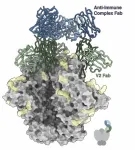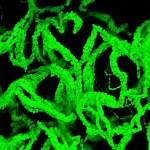(Press-News.org) SAN ANTONIO, Jan. 17, 2025 – On the eve of a historic merger between The University of Texas Health Science Center at San Antonio and The University of Texas at San Antonio, researchers from the two institutions have been honored with highly prestigious 2025 Hill Prizes, in medicine and technology.
The prizes are awarded by the Texas Academy of Medicine, Engineering, Science and Technology (TAMEST), and Lyda Hill Philanthropies, which fund the awards to “propel high-risk, high-reward ideas and innovations that demonstrate very significant potential for real-world impact and can lead to new, paradigm-shifting paths in research,” according to TAMEST.
The prizes are given in six categories: Medicine, Public Health, Engineering, Biological Sciences, Physical Sciences and Technology. They recognize and advance top Texas innovators providing seed funding to advance groundbreaking science and highlight Texas as a premier destination for world-class research. Each of the six winning proposals will receive $500,000 in funding from Lyda Hill Philanthropies to accelerate their work.
The recipient for medicine is Kenneth M. Hargreaves, DDS, PhD, professor of endodontics, pharmacology, surgery, and cellular and integrative physiology at UT Health San Antonio. His co-investigator for the award is Stanton McHardy, PhD, associate professor of medicinal chemistry at UTSA.
And the technology recipient is Robert De Lorenzo, MD, president and co-founder of university tech startup EmergenceMed LLC, and professor and vice chair of research for the Department of Emergency Medicine at UT Health San Antonio. De Lorenzo’s co-principal investigator for the award is R. Lyle Hood, PhD, associate professor of mechanical engineering at UTSA, and an EmergenceMed co-founder.
“These awards will support crucial advancements in key areas of high medical need: non-opiate pain relief and emergency airway protection,” said Robert Hromas, MD, FACP, acting president of UT Health San Antonio. “They are truly collaborative team efforts and are evidence of the extraordinary biomedical development going on here in San Antonio.”
“I’m delighted to see our esteemed researchers and faculty members honored by TAMEST as 2025 Hill Prize recipients, as it speaks to the power of collaboration between the two institutions that will soon establish one, premier powerhouse for continued innovation and advancement in these impactful areas,” said UTSA President Taylor Eighmy, PhD. “This caliber of recognition speaks volumes to the incredible work our colleagues do each day to positively and significantly improve the lives of so many in our communities.”
Developing non-opioid painkillers
Hargreaves, inaugural director of the UT Health San Antonio School of Dentistry’s Center for Pain Therapeutics and Addiction Research, was chosen for developing non-opioid analgesics, also known as painkillers, to reduce the use of opioids and prevent drug addiction.
Prescription opioids such as hydrocodone and oxycodone are widely recognized to be a major gateway to opioid use disorder (OUD). The drug overdose epidemic continues to accelerate, with Texas experiencing a 75% increase in death rates over the last five years.
Hargreaves and his team will use the prize funding to develop novel non-opioid analgesics and create a critical bridge to help prompt commercial development. His team identified a new approach to identify novel targets and found several potential candidates.
He will partner with McHardy and other researchers at UTSA to validate the potential novel targets identified and screen active compounds. The outcome aims to create a novel non-opioid analgesic and in turn, reduce opioid use syndrome and the epidemic of related overdose deaths.
“This Hill Award will catalyze the development of novel analgesics, thereby helping to reduce the epidemic of substance use disorder,” Hargreaves said.
Improving emergency airway management
De Lorenzo was chosen for addressing long-standing issues in airway management for emergency, critical care and surgical settings. Current endotracheal tubes (ETTs) have suffered from high failure rates, dislodgement, leakage and a lack of innovation over the past 125 years.
Prize funding will be used to partner with Hood and other researchers at UTSA to redesign the ETTs by developing a Flexible Airway Securement Tube (FAST) and then taking the design to market. The new design features innovative expanding/contracting geometries, smart materials and modular components.
“This award has arrived at a pivotal time for the effort,” said UTSA’s Hood, who serves as chief technology officer of EmergenceMed. “Our team has been exploring new materials and actuation methods for a far more user-friendly and intuitive endotracheal tube. This funding will help us achieve those improvements, broaden the patent portfolio on the technology, and engage with new partners for integrating sensors and smart systems that can respond to patient condition and first responder needs.”
This will enable better adaptability to various trachea sizes, improved fluid sealing and greater stability. This redesign promises to simplify intubation, enhance patient safety and pave the way for future AI-driven advancements in airway management.
Hood’s work has focused on medical device development, resulting in more than a dozen peer-reviewed articles from journals, and patents on the design, prototyping, characterization and field analysis for innovative portable oropharyngeal suction devices, endotracheal tubes and alternatives to the laryngoscope.
Rewarding creative collaboration
A committee of TAMEST members (Texas-based members of the National Academies) selected the recipients, and finalists were endorsed by a committee of Texas Nobel and Breakthrough Prize Laureates and approved by the TAMEST Board of Directors.
“On behalf of TAMEST, we are honored to congratulate this year’s recipients of the Hill Prizes, whose work exemplifies innovation and excellence and helps define Texas as a leader in scientific research and discovery,” said TAMEST President Brendan Lee, MD, PhD (NAM), Baylor College of Medicine. “These prestigious prizes not only recognize their remarkable research but also benefit from the critical support from Lyda Hill Philanthropies to help propel their work forward. We know their discoveries will continue to advance science in ways that will have a lasting impact on our world.”
“The Hill Prizes are designed to catalyze groundbreaking ideas and offer seed funding that bridges the gap between research and real-world impact,” said 2025 Hill Prizes Committee Chair David E. Daniel, PhD (NAE), The University of Texas at Dallas. “There is no shortage of innovation in Texas, and it was an honor to help put forward recipients whose deserving high-potential projects can now move forward thanks to Lyda Hill and her team’s support.”
The projects selected for the 2025 Hill Prizes focus on creative, collaborative approaches to some of the world’s biggest challenges, featuring top-tier, cross-disciplinary teams with leaders and researchers from multiple institutions. Principal investigators of the winning proposals will be recognized the evening of Feb. 4 at the opening reception of the TAMEST 2025 Annual Conference in Irving.
The University of Texas Health Science Center at San Antonio (UT Health San Antonio), a primary driver of San Antonio’s $44.1 billion health care and biosciences sector, is the largest academic research institution in South Texas with an annual research portfolio of $413 million. Driving substantial economic impact with its six professional schools, a diverse workforce of more than 8,500, an annual expense budget of $1.46 billion and clinical practices that provide 2.6 million patient visits each year, UT Health San Antonio plans to add more than 1,500 higher-wage jobs over the next five years to serve San Antonio, Bexar County and South Texas. To learn about the many ways “We make lives better®,” visit UTHealthSA.org.
Stay connected with The University of Texas Health Science Center at San Antonio on Facebook, Twitter, LinkedIn, Instagram and YouTube.
The University of Texas at San Antonio (UTSA) is a Tier One research university and a Hispanic Serving Institution specializing in cyber, health, fundamental futures, and social-economic transformation. With more than 35,000 students, it is the largest university in the San Antonio metropolitan region. UTSA advances knowledge through research and discovery, teaching and learning, community engagement and public service. The university embraces multicultural traditions and serves as a center for intellectual and creative resources as well as a catalyst for socioeconomic development and the commercialization of intellectual property—for Texas, the nation and the world. Learn more online, on UTSA Today or on Instagram, Facebook, X (Twitter) or LinkedIn.
UT Health San Antonio contact: Steven Lee, (210) 450-3823, lees22@uthscsa.edu
UTSA contact: John Elizondo, (210) 458-2087, john.elizondo@utsa.edu
END
UT Health San Antonio, UTSA researchers receive prestigious 2025 Hill Prizes for medicine and technology
Soon-to-be merged schools lauded for creative collaboration
2025-01-17
ELSE PRESS RELEASES FROM THIS DATE:
Panorama of our nearest galactic neighbor unveils hundreds of millions of stars
2025-01-17
In the decades following the launch of NASA's Hubble Space Telescope, astronomers have tallied over 1 trillion galaxies in the universe. But only one galaxy stands out as the most important nearby stellar island to our Milky Way — the Andromeda Galaxy. It can be seen with the naked eye on clear autumn nights as a faint oval object roughly the size of the moon.
A century ago, astronomer Edwin Hubble first established that this so-called "spiral nebula" was approximately 2.5 million light years away from our own Milky Way galaxy.
Now, the space telescope named ...
A chain reaction: HIV vaccines can lead to antibodies against antibodies
2025-01-17
LA JOLLA, CA—Many vaccines work by introducing a protein to the body that resembles part of a virus. Ideally, the immune system will produce long-lasting antibodies recognizing that specific virus, thereby providing protection.
But Scripps Research scientists have now discovered that for some HIV vaccines, something else happens: after a few immunizations the immune system begins to produce antibodies against immune complexes already bound to the viral protein alone. They don’t yet know whether this chain reaction, described in Science ...
Bacteria in polymers form cables that grow into living gels
2025-01-17
Scientists at Caltech and Princeton University have discovered that bacterial cells growing in a solution of polymers, such as mucus, form long cables that buckle and twist on each other, building a kind of "living Jell-O."
The finding could be particularly important to the study and treatment of diseases such as cystic fibrosis, in which the mucus that lines the lungs becomes more concentrated, often causing bacterial infections that take hold in that mucus to become life threatening. This discovery ...
Rotavirus protein NSP4 manipulates gastrointestinal disease severity
2025-01-17
Researchers at Baylor College of Medicine and collaborating institutions have improved our understanding of how rotavirus, the most common cause of acute gastroenteritis in children, makes people sick. The study published in Science Advances is among the first to show that the rotavirus protein NSP4 is both necessary and sufficient for multiple aspects of rotavirus infection by disrupting calcium signaling not only within infected cells but also in nearby uninfected cells. These disruptions in calcium signaling affect rotavirus disease severity, providing new insights into how ...
‘Ding-dong:’ A study finds specific neurons with an immune doorbell
2025-01-17
Interleukin-1 (IL-1) is a key molecule involved in inflammation and plays an important role in both healthy and diseased states. In disease, high levels of IL-1 in the brain are linked to neuroinflammation, which can disrupt the body’s stress response, cause sickness-like behaviors, worsen inflammation by activating brain immune cells, and allow immune cells from the body to enter the brain. It also can lead to brain damage by causing support cells to produce harmful molecules. Elevated IL-1 levels are associated with mood disorders, ...
A major advance in biology combines DNA and RNA and could revolutionize cancer treatments
2025-01-17
Our genes contain all the instructions our body needs to function, but their expression must be finely regulated to guarantee that each cell performs its role optimally. This is where DNA and RNA epigenetics comes in: a series of mechanisms that act as "markers" on genes, to control their activity without modifying the DNA or RNA sequence itself.
Until now, DNA and RNA epigenetics were studied as independent systems. These two mechanisms seemed to function separately, each playing its own role in distinct stages of the gene regulation process.
Perhaps that was a mistake.
In a publication ...
Neutrophil elastase as a predictor of delivery in pregnant women with preterm labor
2025-01-17
Background and objectives
No previous study has been conducted in Nigeria on the role of neutrophil elastase in predicting preterm birth. The present study aimed to determine the role of the neutrophil elastase test in predicting birth in women with preterm labor.
Methods
The present prospective cohort study recruited 83 pregnant women with preterm labor between 28 and 36+6 weeks of gestation, and followed up these subjects for 14 days. The controls comprised 85 pregnant women without preterm labor. The cervicovaginal fluid was collected and tested using the neutrophil elastase test. Then, the sensitivity, specificity, and positive and negative predictive parameters were determined. ...
NIH to lead implementation of National Plan to End Parkinson’s Act
2025-01-17
WHAT:
With support from the U.S. Department of Health and Human Services (HHS) Office of the Assistant Secretary for Health (OASH), the National Institutes of Health (NIH) is leading the implementation of the Dr. Emmanuel Bilirakis and Honorable Jennifer Wexton National Plan to End Parkinson’s Act (P.L. 118-66), which was signed into law on July 2, 2024. This follows a delegation of authority from the Secretary of the Department of Health and Human Services to the NIH Director.
The act establishes a Federal ...
Growth of private equity and hospital consolidation in primary care and price implications
2025-01-17
About The Study: In this cross-sectional study, nearly one-half of all primary care physicians (PCPs) were affiliated with hospitals, while private equity-affiliated PCPs were growing and concentrated in certain regional markets. Relative to PCPs in independent settings, hospital-affiliated PCPs and private equity-affiliated PCPs had higher prices for the same services.
Corresponding Author: To contact the corresponding author, Yashaswini Singh, PhD, MPA, email yashaswini_singh@brown.edu.
To access the embargoed study: Visit our For The Media website at this link https://media.jamanetwork.com/
(doi:10.1001/jamahealthforum.2024.4935)
Editor’s ...
Online advertising of compounded glucagon-like peptide-1 receptor agonists
2025-01-17
About The Study: This cross-sectional study showed websites that sell compounded glucagon-like peptide-1 receptor agonists (GLP-1 RAs) often partially informed and sometimes misinformed potential consumers. Compounded medications contain the same active ingredients as in branded medications but may contain different inactive ingredients. Most websites did not disclose that compounded GLP-1 RAs were not FDA approved, although some suggested these drugs were FDA approved. Many websites provided limited safety information and unauthorized efficacy claims. Some ...
LAST 30 PRESS RELEASES:
An ECOG-ACRIN imaging study solves a long-standing gap in metastatic breast cancer research and care: accurately measuring treatment response in patients with bone metastases
Cleveland Clinic presents final results of phase 1 clinical trial of preventive breast cancer vaccine study
Nationally renowned anesthesiology physician-scientist and clinical operations leader David Mintz, MD, PhD, named Chair of the Department of Anesthesiology at the UM School of Medicine
Clean water access improves child health in Mozambique, study shows
Study implicates enzyme in neurodegenerative conditions
Tufts professor named Fellow of the National Academy of Inventors
Tiny new device could enable giant future quantum computers
Tracing a path through photosynthesis to food security
First patient in Arizona treated with new immune-cell therapy at HonorHealth Research Institute
Studies investigate how AI can aid clinicians in analyzing medical images
Researchers pitch strategies to identify potential fraudulent participants in online qualitative research
Sweeping study shows similar genetic factors underlie multiple psychiatric disorders
How extreme weather events affect agricultural trade between US states
Smallholder farms maintain strong pollinator diversity – even when far from forests
Price of a bot army revealed across hundreds of online platforms worldwide – from TikTok to Amazon
Warblers borrow color-related genes from evolutionary neighbors, study finds
Heat signaling from plants is an ancient pollinator signal
New index reveals the economics underlying the online manipulation economy
High-resolution satellite observations reveal facility-level methane emissions worldwide
Researchers discover how Ebola and Marburg disrupt the gastrointestinal tract
Feeling the heat
Eastward earthquake rupture progression along the Main Marmara Fault towards Istanbul
Scientists uncover how Earth’s mantle locked away vast water in early magma ocean
Scientists uncover key driver of treatment-resistant cancer
Rare image of Tatooine-like planet is closest to its twin stars yet
Music: Popular song lyrics have become more negative since 1973
Marine ecology: Killer whales tail dolphins to hunt salmon
ADHD prescriptions on the rise, study finds
How to build a genome
Sharp rise in ADHD stimulant prescriptions in Ontario, research finds
[Press-News.org] UT Health San Antonio, UTSA researchers receive prestigious 2025 Hill Prizes for medicine and technologySoon-to-be merged schools lauded for creative collaboration



